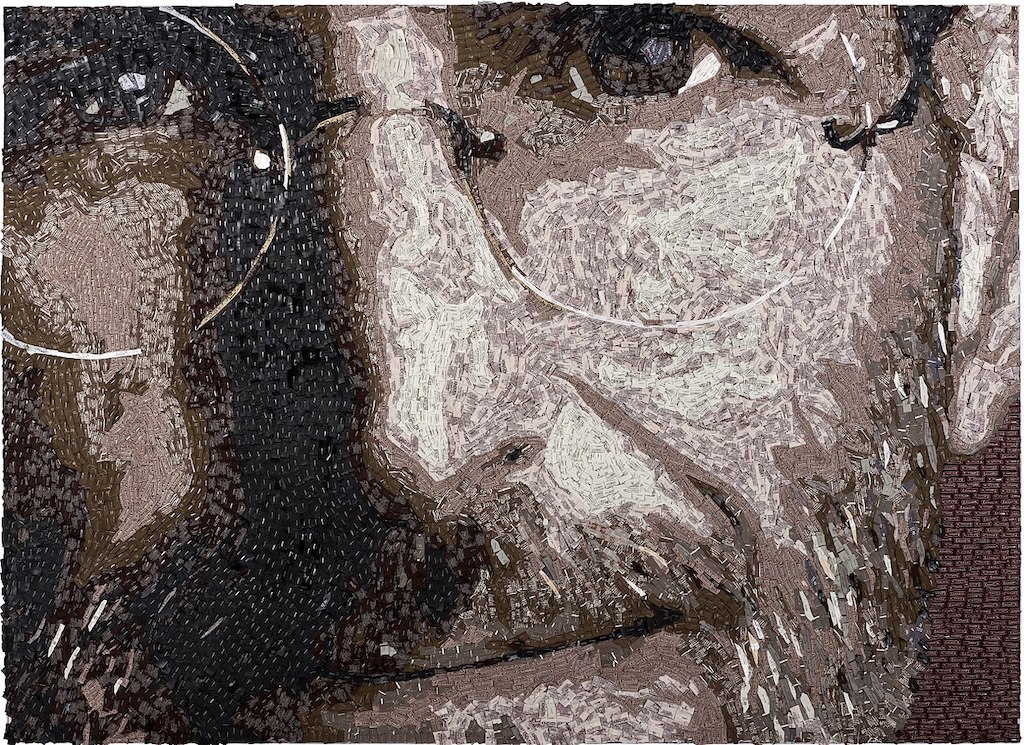

Steve Jobs. Portrait by Nora Adame / Wikimedia Commons
There’s a concept that well known to those of us who have a passing interest in chaos theory. It’s called the butterfly effect. It was coined around the time I was born by American mathematician and meteorologist, Edward Norton Lorenz. He inferred that the wind generated by flapping of a butterfly’s wings could influence weather patterns sufficiently to generate a hurricane in another part of the world.
It’s an appropriate metaphor for history. Hurricanes, when they occur, are treated as the natural order of things. Few of us stop to pay attention to butterflies and those of us who do rarely consider their future impact.
I met Steve Jobs at Princeton University circa 1988. He unveiled a black cube with matching monitor. On the screen popped up a completely unrelated set of things including the complete works of Shakespeare and a flight simulator. The cube proceeded to play a sonata in flawless stereo sound. How the hell is he doing that? I asked myself. You see, the computer memory size, processor speed, and hard disk speed needed to play an audio file that well just did not exist in the realms of affordability at that time.
The secret was that the NeXT Cube as he called it, (which was to my eyes the most beautiful piece of technology I had seen, overtaking Bang & Olufsen’s audio equipment and the gull-winged DeLorean DMC-12), had an embedded digital signal processing chip which synthesised the piano — making the Cube simultaneously both the instrument and the musician.
But Steve Job’s influence in my life had begun two years prior to that meeting when I arrived at the university’s Computer Center and saw my first Macintosh and laser printer. Understand that I was a journalist who had skipped country in the wake of 1986 State of Emergency. The idea of equipment powerful enough to produce a newspaper but small enough to fit in the back seat of a car was mind-blowing.
So I went upstairs to the user support area called the Clinic where I found a bespectacled grey-haired women with a twinkle in her eye sitting behind a green screen computer terminal. “I need a job,” I said.
Almost 20 years later, Rita Saltz wrote this recollection of the encounter: “Kanthan responded to my campus advertisement seeking first-year students as potential computer consultants. He explained he had no knowledge of, or experience with, computers—but had used a terminal to enter his copy as a journalist and was interested in learning more about the technology.
“Although at the time I’d already engaged the intended complement of knowledgeable undergraduates, there was something compelling about this man that made me add him to the mix. It was a fateful decision.
“Within a few weeks, Kanthan had learned enough about the multi-platform resources to match the best of our experienced senior student consultants. He became a technology tutor for the other student consultants. Within a few months, our senior systems and networking professionals were coming to Kanthan for information, advice and collaboration. The Vice President for Computing and Information Technology began suggesting assignments for him, and Kanthan began coding his own more creative inventions for support of the campus clientele--and for pursuit of personal diversion.”
Those skills acquired at Princeton led to my being headhunted to help set up a research centre in Sardinia, Italy — where I made some of the dearest friends of my life and where my daughter was born.
I then brought those skills back home where I steered a team which ripped out the Argus company’s old publishing technology and placed an internet-connected Apple Macintosh on every journalist’s desk in 1995.
I then took those skills across to e.tv where I equipped the news team with digital video cameras and Apple Macintosh video edit suites.
And I have brought those skills now to the radio industry where we are doing innovative things with our Durban-based partners, (immedia led by Anice Hassim), that have never been attempted on this continent.
There have been many commentaries on Steve Job’s passing away last week at age 56. There are many who try to draw comparisons with other great innovators across time. These commentaries are all superficial because they all focus on the technology and fail to take into account the butterfly effect.
Were it not for Steve Jobs, I and thousands of others would have made very different career choices, which in turn would have affected the lives of those we have in turn have mentored to success. I firmly believe that when historians centuries from now look back on this period, they will record Steven Paul Jobs as the most influential person in the history of the human race until now.
So the most fitting epitaph I could think of for the man who unknowingly ended up shaping the course of my life (and yours, because you’ve read this far) was what I posted on Twitter: “Thank you, Steve. Sent from my iPhone”.
